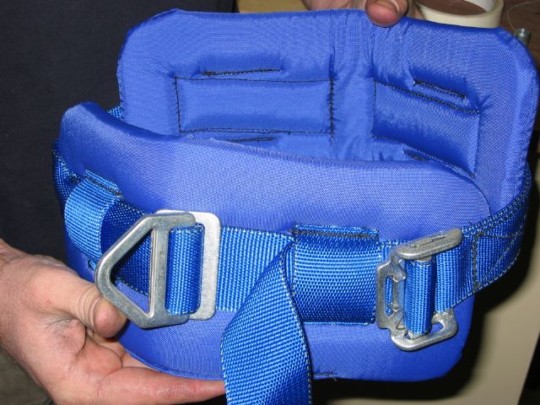Learn how to get your rigging right
A four-corner system will center the athlete on the trampoline better than a two corner system, and usually allow effective wider attachment placement. The higher the system is and the wider the system is, the longer the air time. If the length of the cords at full stretch is less than double the length of the cords when at the roof, then there is a good chance that the tension on the athlete will always be maintained. The length of cords to be used is adjusted based on pulling a sample down from one of the equidistant points to the center of the trampoline bed, and making sure that it does not quite bottom out here. (When the athlete with the belt on depresses the bed, the cords are usually a bit shorter than this due to ropes going from the belt to smalls welded rings to attach the two cords on each side to.)

If the cords are too short the athlete will bottom the cords when travelling or landing on the bed on his back. If the cords are too long they will still go loose at the top of the bounce, as most bungee cords are between 1.7 and 2.2 stretch ratio. To support a given athlete at the desired height of just touching the bed, or above the bed, depending on whether routines or new skills are being attempted, the number of cords in use should be varied to match the athlete’s weight, rather than the length of the cords. (Cord length is chosen based on the considerations above.
Hence a number of cords are needed per corner. (Likely you will need about 6 per corner using 8mm or 5/16th cord.) If the cords do not bottom out then the force on each attachment point of the four is only about one third of the heaviest athlete’s weight. This means that fancy beam clamps are not needed. However be aware that athletes like to play games such as pulling the athlete in the belt back and sling-shotting them forwards, so in this case higher stresses are put on the attachment points.
As the attachments are on the roof and will likely hardly ever be inspected for wear, we recommend an extra fail safe connection with no weight on it through the top connection ring or chain link, so that if the main connection to the roof fails the system will only fall a couple of inches before the never worn second system kicks in.
Please note that proper use of a bungee belt is not discussed here. Refer to coaching books or certification courses for the proper use of belts and bungee belts. Be aware that bungee belts slow down landings but do not stop contact with the trampoline bed That is they do not stop the possiblilty of injury. Also a bungee belt can encourage athletes to bounce higher and/or try more complex skills.

